
John Carradine was an American actor, considered one of the greatest character actors in American cinema. He was a member of Cecil B. DeMille's stock company and later John Ford's company, known for his roles in horror films, Westerns, and Shakespearean theater, most notably portraying Count Dracula in House of Frankenstein (1944), House of Dracula (1945), Billy the Kid Versus Dracula (1966), and Nocturna: Granddaughter of Dracula (1979). Among his other notable roles was “Preacher Casy” in John Ford’s The Grapes Of Wrath. In later decades of his career, he starred mostly in low-budget B-movies. In total, he holds 351 film and television credits, making him one of the most prolific English-speaking film and television actors of all time.

Yvette Carmen Mimieux was an American film and television actress. Her breakout role was in The Time Machine (1960). She was nominated for three Golden Globe Awards during her acting career.
Mack Charles Parker was an African-American victim of lynching in the United States. He had been accused of raping a pregnant white woman in northern Pearl River County, Mississippi. Three days before he was to stand trial, Parker was kidnapped from his jail cell in the Pearl River County Courthouse by a mob, beaten and shot. His body was found in the Pearl River, 20 miles west of Poplarville, 10 days later. Following an investigation by the Federal Bureau of Investigation, the men who killed him were released. Despite confessions, no one was ever indicted for the killing. Historian Howard Smead called the killing the "last classic lynching in America."

The Sasquatch Gang is a 2006 American comedy film written and directed by Tim Skousen, who served as first assistant director on Napoleon Dynamite.

The Hunter is a 1980 American biographical action thriller film directed by Buzz Kulik and starring Steve McQueen. The film was McQueen's final role before his death in November 1980 at age 50.

The Three Burials of Melquiades Estrada is a 2005 neo-Western film directed by and starring Tommy Lee Jones and written by Guillermo Arriaga. It also stars Barry Pepper, Julio Cedillo, Dwight Yoakam, and January Jones.
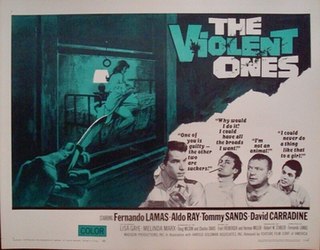
The Violent Ones is a 1967 film directed by and starring Fernando Lamas. The story was written and created by Charles Davis, Fred Freiberger, Herman Miller, and Doug Wilson. The film was shot in the Alabama Hills, Mojave Desert and Lone Pine, California.

Crazy in Alabama is a 1999 American comedy-drama film directed by Antonio Banderas and based on Mark Childress' 1993 novel of the same name. The film stars Melanie Griffith as an abused housewife who becomes an actress, while her nephew deals with a racially motivated murder involving a corrupt sheriff. It marked Dakota Johnson's film debut.
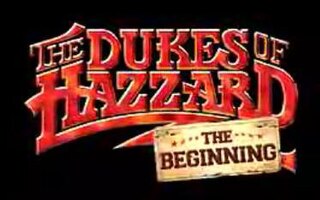
The Dukes of Hazzard: The Beginning is a 2007 American made-for-television buddy comedy film and a prequel to the 2005 film The Dukes of Hazzard. An edited version of the film originally aired on ABC Family channel on March 4, 2007, and the 'R'-rated and unrated versions were released on DVD March 13.

Elvis and Anabelle is an American romantic drama film written and directed by Will Geiger. It stars Blake Lively, Max Minghella, Joe Mantegna, Mary Steenburgen, and Keith Carradine. The film premiered on March 10, 2007, at the South by Southwest film and music festival in Austin, Texas, and later premiered on HBO in 2012.

Blood of Ghastly Horror is a 1971 horror film directed by Al Adamson and starring John Carradine, Tommy Kirk, Kent Taylor, and Regina Carrol.

Charlie Chan in Paris is the seventh film produced by Fox with Warner Oland as Charlie Chan. Long thought lost, it is available on DVD as part of Twentieth Century Fox Home Video's Charlie Chan Collection, Vol. 1. Hamilton MacFadden directed some early scenes before Lewis Seiler took over. It is the first entry in the series to feature actor Keye Luke, who would become a mainstay in his role as Chan's "Number One Son" Lee.

Chiefs is a 1983 American television miniseries based upon the novel of the same name by Stuart Woods. It was first broadcast on CBS over three nights in November 1983. It was directed by Jerry London, and stars Charlton Heston, Keith Carradine, Stephen Collins, Danny Glover, Wayne Rogers, and Billy Dee Williams. It received three Emmy Award nominations and one Eddie Award nomination.

Stephen King's Desperation is a 2006 American made-for-TV horror film based on Stephen King's 1996 novel of the same name. King himself wrote the teleplay. The film was directed by frequent King collaborator Mick Garris and stars Ron Perlman, Tom Skerritt, Steven Weber and Annabeth Gish.
Jackson County Jail may refer to:
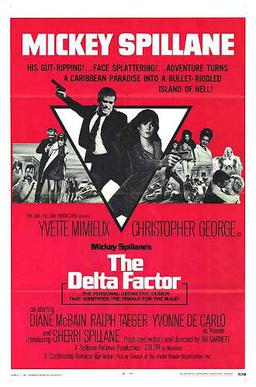
The Delta Factor is a 1970 American adventure film, co-produced and directed by Tay Garnett who co-wrote the screenplay with Raoul Walsh. It stars Christopher George and Yvette Mimieux. The film is based on the 1967 novel by Mickey Spillane.
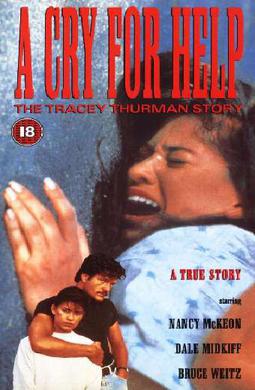
A Cry for Help: The Tracey Thurman Story is a 1989 American made-for-television drama film based on the 1985 ruling Thurman v. City of Torrington. The film stars Nancy McKeon as Tracey; Dale Midkiff as Buck; and Bruce Weitz as Tracey's lawyer, Burton Weinstein.
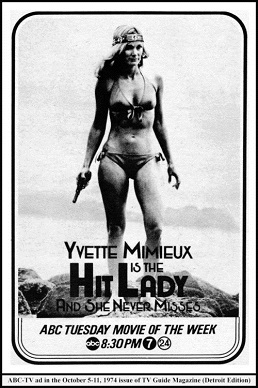
Hit Lady is a 1974 made-for-TV film which aired on October 8, 1974. Starring Yvette Mimieux as artist and assassin Angela de Vries, it was written by Mimieux and directed by Tracy Keenan Wynn.
Outside Chance is a 1978 American TV film starring Yvette Mimieux, directed by Michael Miller. It is a radical reworking of Miller's 1976 film Jackson County Jail, which Mimieux had starred in; it contains 30 minutes of footage from the original film, blended with newly shot material. CBS had previously aired Jackson County Jail in prime time to respectable ratings, and Miller pitched the network on an alternate storyline for Mimieux's character, envisioning a potential series for her in the vein of The Fugitive. The film premiered on the network on Saturday, December 2, 1978.

See You Yesterday is a 2019 American science fiction film directed by Stefon Bristol with a screenplay by Bristol and Fredrica Bailey based on Bristol's 2017 short film of the same name. It stars Eden Duncan-Smith, Danté Crichlow, Marsha Stephanie Blake, and Brian "Stro" Bradley.

















